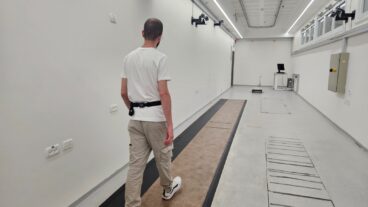Israeli research created the basic methodology for a group of neurosurgeons in Grenoble, France, in 1993, to first implant an electrode deep inside the brain of in a human patient with Parkinson’s disease.Naomi Moskowitz a 60-year-old Jerusalem woman who suffered from Parkinson’s disease, had a terrible quality of life. The neurological condition had reached the point where she continually shook and and experienced spasms with involuntary movements, making it impossible for her to walk down the street or sit at a table and feed herself. She was incapable of controlled movement.
Today, thanks to a procedure called deep brain stimulation which is based on a technology developed by an Israeli researcher, her disabling motor symptoms of Parkinson’s disease are gone. Her movements are controlled, and she and her family are overjoyed. With far greater control over their body movements, she has nothing less than second chance at life.
Parkinson’s is a progressive disease of the nervous system that affects an estimated 1.2 million people in the United States and Canada. Symptoms include tremors, body rigidity and problems in movement. Former boxing champion Muhammad Ali, actor Michael J. Fox and former Attorney General Janet Reno are among prominent victims of Parkinson’s.
Moskowitz underwent a procedure to have electrodes implanted in her brain that activate the deep brain stimulation. This surgery has been conducted on eleven patients in Israel and many in Europe and North America.
Moskowitz’s operation was performed by Dr. Zvi Israel of the Hadassah Medical Center – Ein Kerem, as part of the hospital’s new Movement Disorder Surgery Program. The program has been highly successful in eliminating the physical manifestations of Parkinson’s disease in a select group of patients.
“The story behind this surgery began in 1982,” explains Israel, “when young people began turning up in emergency rooms in Los Angeles, suffering from what looked like an acute picture of sudden Parkinson’s disease – it was nothing like older people with a gradual onset of the disease.”
It did not take long to discover that all of these people had used cocaine tainted with the same chemical. This was a turning point in Parkinson’s research, because the discovery of a chemical that could induce the disease opened up the opportunity for scientific research.
That opportunity was seized by scientists, which included an Israeli named Haggai Bergman, was completing his post-doctoral work in the United States. Bergman, working with a Parkinson’s monkey model, discovered a group of cells located deep in the brain called the sub-thalamic nucleus. When Parkinson’s was present, he discovered, these cells were overactive.
The question he strove to answer was: was the Parkinson’s disease causing the cells to be overactive, or was the overactivity causing Parkinson’s? To find out, Bergman injected a chemical into the brain to kill the cells, and he discovered that the Parkinson’s symptoms abated.
His research was published in 1990, and created the basic methodology for a group of neurosurgeons in Grenoble, France, in 1993, to first implant an electrode deep inside the brain of in a human patient with Parkinson’s disease. The electrode triggered an electric impulse which provided deep brain stimulation, and ‘switched off’ the overactive cells, dramatically decreasing the level Parkinson’s-induced involuntary movement.
Following the success of the operation in Europe, the next centers to attempt this operation were in the United States and Canada. In 2001, when the procedure gained FDA approval, the number of hospitals in the United States performing the operation mushroomed.
But it took until last year for the operation made possible by Israeli know-how, to finally come to Israel, with the creation of the Movement Disorder Surgery Program at Hadassah. Bergman – now on the faculty of Hebrew University Medical School is a full partner in the program, a joint effort between Hadassah’s neurosurgery and neurology department.
“It took a long time to build the program,” said Israel. “We needed to buy some expensive equipment, we needed to garner the confidence of our neurologists – who are very conservative by nature and don’t like to send their patients to surgery quickly, and there were manpower and evaluation issues, and most importantly, we had to figure out how to pay for this surgery, since it is not covered by Israeli health funds.”
After overcoming these obstacles, the program has treated eleven patients – seven who had Parkinson’s, and the rest with other forms of movement disorders.
“Naomi Moskowitz, and other patients,” notes Israel, “could have gone abroad for this surgery in previous years, but waited until it was being done in Israel, so they could undergo it with their support system at home in place.”
Even he has been taken aback by the dramatic improvement in the patients following the surgery.
“I must say, until I did it myself and saw the results, I didn’t completely believe it,” he says.
He stressed that the operation does nothing to cure Parkinson’s disease, but it dramatically alleviates and “turns back the clock” on its debilitating symptoms. In many patients, they are able to retain their quality of life for many years afterwards. Others he says, experience somewhat of a decline in their functioning, but there is little evidence of a decline back to the pre-surgery condition.












